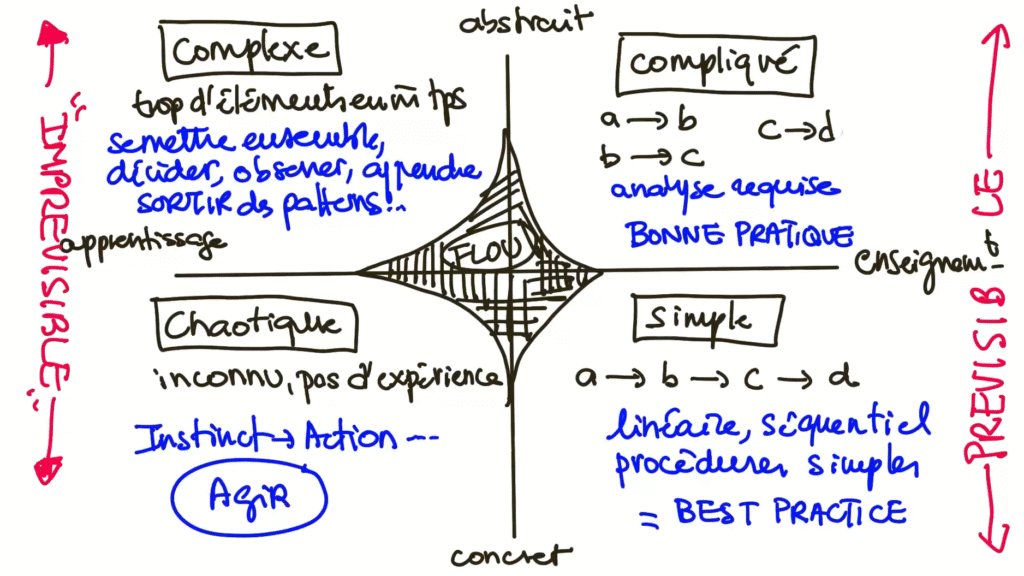Seriousely, Am I Becoming Incompetent?
I hear that question too often these days.
Indeed, there are moments when everything at work feels blurred, when well-known methods no longer work, and when each decision seems impossible, given the sheer number of variables to consider.
This is something I see often in my work with people in leadership positions, particularly women who are holding the line, adapting, absorbing pressure. They are often caught in a series of disruptions, crises with no clear connection:
A funding cut here
- A cyberattack there
- A supply shortage (again)
- A collective agreement that blocks
- A chaotic reorganization
- A drop in sales
And always the same feeling: a heavy sense of responsibility, of needing to hold it all together.
Understanding Complexity Through the Cynefin Framework
Since I discovered the Cynefin framework, I’ve used it in every advanced leadership program I deliver. Not as a miracle solution. But as a frame of reference that soothes, clarifies, and restores agency.
Because it offers something rare and precious: a way to name the complexity without blaming ourselves for it. It removes the guilt that often comes with not knowing what to do next.
What Cynefin helps us see

The model highlights two types of environments.
1. Ordered contexts
Where cause and effect are visible. Where best practices work. Where problems may be simple or complicated—but they’re logical, structured, and can be solved with expertise and analysis.
2. Disordered contexts
Where everything influences everything else. Where there’s no linear logic. No obvious cause and effect. These are the complex and chaotic zones—where we must observe, test, adjust, and learn as we go.
Which, let’s be honest, describes much of today’s reality.
What changes when you switch our frame
In complex and chaotic contexts, knowledge and expertise aren’t enough.
What makes the difference is the ability to create spaces where ideas can emerge. Where teams are allowed to think, to try, to learn. Without guilt. Without pretending to have all the answers.
I’ve seen teams literally straighten up the moment they understand this. A sense of relief. Of dignity restored. As if they were finally allowed:
- To not know everything
- To not control everything
- To not have to solve it all
And when the stress drops, something powerful returns:
- ✨ Creativity
- 🔥 Engagement
- 🗭 Discernment in action
Let’s stop expecting know-it-all attitude
One needs to stop expecting managers and leaders—especially women leaders—to play the superwoman. To carry it all, to fix it all, to know it all.
If that role still feels familiar to you, I invite you to lay the cape down. To listen, really listen, to what’s happening on the ground. To make space for thinking that’s not rushed. To support teams in making sense, testing paths, and learning together.
That’s transformative leadership. And that’s the kind of soft skill that sustains both performance and well-being.
Isn’t that what we’re all dreaming of?
here is the link to the video
Explore my article on transformative leadership and learn how to turn uncertainty into collective intelligence.








